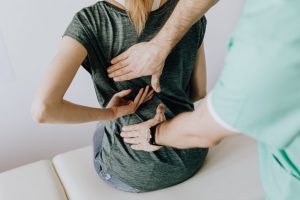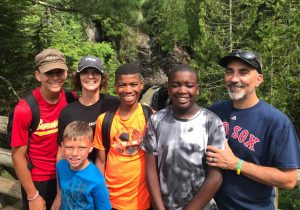“Mom! Dad! My legs hurt!”
Your 11-year-old son or daughter comes up to you complaining that their legs hurt.
You go through your mental checklist: Did they fall? Could they have bumped into something? Are there bruises? Did we go on a long walk recently?
Nope, they haven’t fallen down. There’s no bruises. You haven’t gone on any extra-long family walks lately. But they keep complaining that there’s a stiffness and pain that doesn’t seem to go away. It’s understandable that at this point, you might be a little concerned. Something to consider, though, is whether the pain could be from a growth spurt.
What Are Growing Pains?
There are several times in a child’s life when they grow more quickly than usual. Sometimes we even see more growth in certain areas of their body than others. All of this relies on hormones.
Starting with babies, they have growth spurts every couple of weeks and the length of time in between spurts gradually gets long as they get older. By the time they are a toddler, it’s changed from weeks to months in between spurts; and then gets to be years in between spurts. However, the largest growth spurt that we see is during puberty. With those spurts, the child is growing vertically more rapidly, and will feel it the most in their legs and back.
The hormone that is specifically responsible for growth is called… Can you guess? Growth hormone (they really knocked it out of the park with that name) or GH for short. It is a hormone that comes from the pituitary gland in the brain. The pituitary does not produce GH at a constant rate, but it will secrete it in “spurts.” When the pituitary gives a spurt of GH, I bet you can guess what happens: the body has a spurt of growth.
 Once puberty takes place, an extra amount of GH and other hormones including testosterone and/or estrogen flood the system, and we see growth and changes in many different areas of the body.
Once puberty takes place, an extra amount of GH and other hormones including testosterone and/or estrogen flood the system, and we see growth and changes in many different areas of the body.
With all that growth, especially if it’s focused in one location, your son or daughter may experience pain. The growth plates in the bones lay down a good amount of new bone. The pain does not come from the bones themselves, but the muscles that are being stretched from the bones getting longer. The great part about this is muscles have a fast recovery time. The muscles being stretched the most during puberty are those in the thighs and the lower back. So kids will complain of pain in their knees, hips, and low back.
What kind of pain is it and when should I become concerned?
We do need to talk about what these growing pains feel like so we can determine whether your son or daughter’s pain is normal, or if it is something more concerning.
Growing pains are more “achy”. It may even be a strong ache. But, if they’re complaining of a sharp pain or a numb, tingling pain, it is not growing pains and you should dig deeper into why they are experiencing this.
But here is the difficult part. Kids routinely do not know how to talk about the pain they are feeling. It may be new type of feeling they haven’t felt before and don’t know how to express it in words. I have found that it is helpful to use examples when talking about pain.
- Pins and needles
- Someone pulling on you
- Tight/stretching
- Sharp like a knife poking you
- Tired and slow feeling
Use word and experiences that they can relate to.
Is there anything we can do about growing pains?
When we look at treating growing pains, we want to look at both the health of the bones and the muscles/tendons, and we can do a couple simple things that will help the pain in the moment and help longer term.
Heat
For a short-term remedy, placing a wet heat on that muscle. You can do a warm/hot bath or heat pack/heating pad. This helps to relax the muscle and helps to sooth the muscle. It will also dilate the arteries that will bring more blood flow to the area that will promotes healing.
Nutrition and Supplements
We can also look to a longer-term solution with nutrition and supplements.
For muscle health, magnesium is important for muscles to relax. You can give a supplement from Seeking Health called Magnesium Plus which also has Vitamin B6. This is an excellent combination for kiddos, because we see that kids who experiencing stronger growing pains can be deficient in Vitamin B6.
What about bone health? A 2015 study found that only 6% of kids that have growing pains have adequate levels of Vitamin D. Yep, that means 94% of kids who experience this pain do NOT have enough Vitamin D. Researchers theorize that the health of the bone or the low density of the bone may be adding to the pain the child is experiencing. In the study, those children were treated with Vitamin D, and many of them saw improvement of their pain.
Adjustments
Another large percentage of kids were treated with chiropractic adjustments. We have found that joints become “locked up” when the muscles tighten up due to pain. These joints would include the SI joint, hip joint, the knee, and joints in the low back. When there is dysfunction in a joint, a different joint or muscle will have to compensate for the lack of movement in that other joint. This compensation may cause pain. Adjustments will help the pain that is coming from joints and muscles.
If your son or daughter is experiencing pain from growth spurts, give Valeo Health and Wellness a call, and we can work with your them to feel well again. Take advantage of our Kids Days, too, when your son or daughter can get an adjustment (and exam, if they are a new patient) for just $25 each.
If you are interested, check out our YouTube Page. We have many videos on health and wellness, including a video on Growing Pains.



